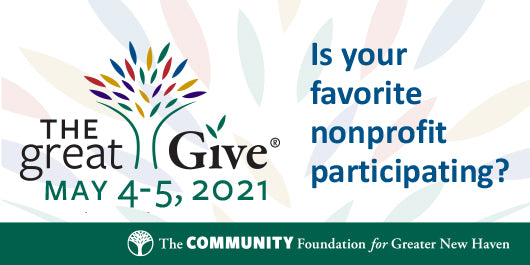For the past three years, the Ely Center of Contemporary Art has issued an Open Call. Artists from anywhere can submit up to five works for consideration to be shown in online, solo and group exhibitions. This egalitarian invitation has elicited some of the most interesting pieces to be seen at ECOCA, including in the current exhibition, Embody, on view through April 18. Its 49 artists and more than 50 works were selected by Krista Scenna—an independent curator and owner of Brooklyn-based Ground Floor Gallery—from 435 submissions to the 2020 call.
This one was unique, Scenna says, in that much of the submitted work had been done during the pandemic. “I thought, ‘OK, wow, what I’m really looking at is a time capsule of what these artists were doing in isolation during all of 2020,” she says. The title Embody acknowledges Scenna’s sense that “the artists really were initiating and celebrating the return of the physical art work and physicality and craftsmanship and labor.”
sponsored by
At the same time, she noticed other themes running through the submissions, even among those created earlier. A surprising number were textiles, an art form and a craft traditionally in the domestic, female domain. Many others addressed the theme of women’s bodies. Those female threads running through the submissions “really struck me because I just kept thinking about how women have really borne the brunt of… day-to-day survival [and] obligations in this pandemic,” Scenna says.
Fabric works are visible from the moment you enter Embody. Among them is Untitled #4 from Remendando Memorias (Mending Memories) (2015) by Amarillis Singh, a larger-than-life portrait of a young woman in a camisole sewn in simple lines of black stitching on a plain white cotton panel that’s fraying at the edges. The lines of the “drawing” are coming apart as well. Thread dangles from the figure’s foot past the edge of the panel and from her right hand, which is tucked beneath her hip. Her face is disembodied, her hair a simple sketch of flyaway sewn lines, her expression tentative. She’s either unraveling or still being formed. It’s even possible that she’s sketching herself. Judging by the loose threads disappearing into her hidden hand, she’s been sewing and is hiding her needle from someone who might stop her.
Hanging in an adjacent gallery, Linda Schmidt’s Panels 70+72+71+69 (2019) is like a tall stained glass window made of fabric—a ceiling-to-floor hanging of four brightly colored panels stitched of rectangles. The color palette leans toward red, from light pink to luscious maroon, with here and there a panel of blue or yellow or white to cool the flare of color. Each panel by itself would be nearly transparent, but hung in layers, alternating horizontal blocks with vertical, they become nearly impenetrable—not to light, but to sight of what’s on the other side. The resulting dense veil is both delicate in its material and sturdy in its effect.
Upstairs, Jody MacDonald’s The Conjoined Twins (2019) speaks humorously to our current state, despite being created pre-pandemic. Two puppetlike naked figures—one male, one female—share a single chair, their arms entwined. But walk around this unlikely pair and you’ll find that their hidden hands hold a pair of scissors and a knife. Those quarantined for too long may recognize the desire to “cut loose.” Attention is drawn to the human body in other pieces, too: in a man’s copper shadow on a blue wall, in the averted gazes of a boy offering flowers and a woman receiving them, in the attempt of a medical professional to hear, leaning close, the breath of a fallen Black man.
I spent the most time in one of ECOCA’s upstairs galleries watching Liz Miller’s video Ubuntu (2020), a compilation of clips in which people from Black communities across the country wear and dance in headdresses Miller has crafted from wire and hair that’s been braided, twisted and woven into elaborate patterns. One of Miller’s creations is worn like a pair of wings, with straight rows of blonde hair evoking large feathers. The locations of these dances are tied to the history of Black oppression: a historic slave market, the site of Freddie Gray’s arrest, the pedestal of a removed statue of Chief Justice Roger B. Taney, who infamously delivered the Dred Scott opinion, determining the Constitution did not allow citizenship for Black people.
Music and spoken testimony from the dancers accompanies Miller’s video. The woman at the site of Taney’s statue says that in a place to which she “was not invited,” she felt she was “honoring those who were here before me”—people whose names and stories she would never specifically know—as she climbed atop the pedestal wearing one of Miller’s creations and shot a plume of purple-colored smoke into the air like incense into a sacred space. One of Miller’s headdresses hangs above the video monitor, and clips interspersed with the healing dances show the artist building them using wire and plenty of hot glue.
“Ubuntu,” the video tells us, is a South African term meaning “humanity” and a reference to the philosophy, “I am because we are.” ECOCA’s call for art in a pandemic year has brought us rooms full of work that in its very being—physically present with us in a gallery, not flattened on a screen—helps to unite us in our common humanity and our need to experience it through art.
Embody
Ely Center of Contemporary Art – 51 Trumbull St, New Haven
Sun-Mon & Wed 1-4pm, Thurs 1-8pm through April 18, 2021
(203) 907-4151 | info@elycenter.org
www.elycenter.org/embody
Written and photographed by Kathy Leonard Czepiel.









